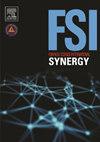Forensic biobank; towards comprehensive forensic genetic frequency database for the Kenyan population
Q1 Social Sciences
引用次数: 0
Abstract
Forensic genetic frequency databases (FGFD) are used in estimating the probability of a DNA match in forensic investigations. They provide reference population data that can be used for statistical estimation for the rarity of a genotype, haplotype or a DNA profile in a population hence giving probative value for forensic evidence.
Currently, three FGFD databases are recommended by the International Society for Forensic Genetics (ISFG) for forensic use; the Y-Chromosome Haplotype Reference Database (YHRD), the EDNAP Mitochondrial DNA Population Database (EMPOP), and the STRs for Identity ENFSI Reference Database (STRidER).
There is need to generate updated and comprehensive genetic frequency data for the Kenyan population in compliance with ethical standards.
This study sought to develop a forensic biobank to facilitate generation of comprehensive genetic frequency data for the Kenyan population. A total of 893 samples were collected from study volunteers in compliance with prescribed ethical standards. The data set comprises 60.8 % Bantu, 24.9 % Nilotic, and 14.3 % Cushitic samples closely mirroring current population structure in Kenya. The samples are currently stored in duplicate as FTA cards and extracted DNA.
132 quality mitogenome reference data has been generated for the coastal region in Kenya. With the broad consent obtained, the resource will be used to generate additional mitogenome reference data for other geographical regions, Y-chromosome haplotype and autosomal STRs for inclusion in recommended forensic databases as per revised guidelines. With the emergence of new technologies in forensic genetics, we anticipate the resource will be valuable in forensic genetics validation studies in future.
法医生物;建立肯尼亚人口的综合法医遗传频率数据库
法医遗传频率数据库(FGFD)在法医调查中用于估计DNA匹配的概率。它们提供参考种群数据,可用于统计估计种群中基因型、单倍型或DNA谱的稀有性,从而为法医证据提供证明价值。目前,国际法医遗传学学会(ISFG)推荐三个FGFD数据库供法医使用;y染色体单倍型参考数据库(YHRD)、EDNAP线粒体DNA种群数据库(EMPOP)和STRs for Identity ENFSI参考数据库(STRidER)。有必要根据伦理标准为肯尼亚人口生成最新和全面的遗传频率数据。本研究旨在开发一个法医生物库,以促进肯尼亚人口全面遗传频率数据的生成。按照规定的道德标准,从研究志愿者中收集了总共893个样本。该数据集包括60.8%的班图人,24.9%的尼罗河人和14.3%的库希特人样本,密切反映了肯尼亚当前的人口结构。目前,这些样本一式两份存储为FTA卡,并提取dna。肯尼亚沿海地区已生成132个高质量的有丝分裂基因组参考数据。在获得广泛同意的情况下,该资源将用于生成其他地理区域、y染色体单倍型和常染色体str的额外有丝分裂基因组参考数据,以便根据修订后的指南纳入推荐的法医数据库。随着法医遗传学新技术的出现,我们预计这些资源将在未来的法医遗传学验证研究中发挥重要作用。
本文章由计算机程序翻译,如有差异,请以英文原文为准。
求助全文
约1分钟内获得全文
求助全文
来源期刊

Forensic Science International: Synergy
Social Sciences-Law
CiteScore
4.90
自引率
0.00%
发文量
75
审稿时长
90 days
 求助内容:
求助内容: 应助结果提醒方式:
应助结果提醒方式:


